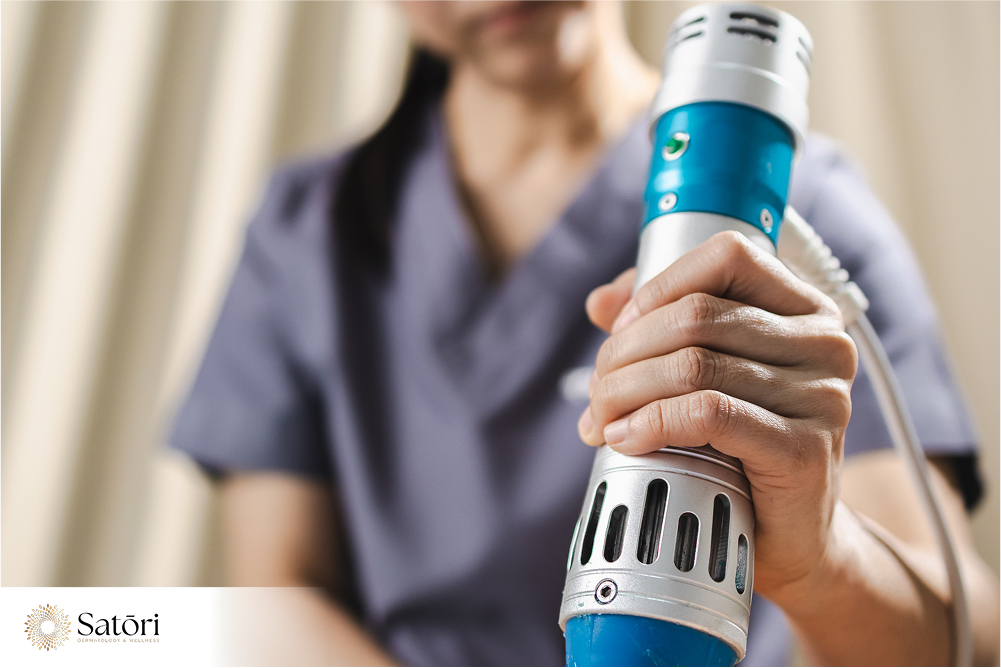Erectile dysfunction (ED) affects millions of men worldwide, with estimates suggesting up to 30 million men in the United States alone experience some form of ED. While traditional treatments like oral medications have dominated the landscape for decades, innovative approaches like acoustic wave therapy are gaining attention.
Today, we’ll explore this groundbreaking treatment option with compassion, clarity, and scientific rigor.

Understanding the Challenge Erectile Dysfunction Brings
Before diving into treatment options, it’s important to understand what we’re addressing. Erectile dysfunction, the consistent inability to achieve or maintain an erection sufficient for satisfactory sexual performance, stems from various causes. Vascular erectile dysfunction, where blood flow issues prevent proper erection, represents the most common type. Other forms include neurogenic (nerve-related), hormonal, or psychological ED.
Risk factors for developing ED include age, cardiovascular conditions, diabetes, obesity, smoking, and certain medications. Beyond the physical symptoms, ED often carries a significant emotional burden, affecting relationships, self-esteem, and overall quality of life. This multifaceted impact makes finding effective treatment options crucial for many men.
What Is Acoustic Wave Therapy for Erectile Dysfunction?
Acoustic wave therapy, also known as low-intensity shockwave therapy (LISWT) or extracorporeal shock wave therapy, represents a non-invasive approach to treating erectile dysfunction. Unlike medications that temporarily enable erections, acoustic wave therapy aims to address underlying causes by promoting the healing and regeneration of penile tissue.
During treatment, a wand-like device delivers gentle pulses of acoustic waves to specific areas of the penis. These sound waves create microtrauma that stimulates the body’s natural healing process. The treatment typically involves multiple sessions over several weeks, with each session lasting about 15-20 minutes.

How Acoustic Wave Therapy Works
The mechanism behind acoustic wave therapy connects to the fundamental causes of vasculogenic erectile dysfunction. When sound waves penetrate penile tissue, they create controlled microtrauma that triggers several beneficial responses:
- Stimulation of new blood vessel formation (neovascularization)
- Improved blood flow to erectile tissues
- Activation of stem cells for tissue repair
- Breakdown of micro-plaque in existing blood vessels
This technology isn’t entirely new to medicine. Shock wave therapy has been used for decades to heal broken bones, improve wound healing, and treat kidney stones. Its application to erectile dysfunction represents an innovative adaptation of proven medical technology.
Does Acoustic Wave Therapy Actually Work?
The question on everyone’s mind: Does shockwave therapy for erectile dysfunction deliver results? Studies offer encouraging evidence while highlighting important considerations.
A systematic review published in the Journal of Personalized Medicine found that low-intensity shockwave therapy showed significant improvement in erectile function, particularly for men with mild to moderate vasculogenic ED. Multiple clinical trials have demonstrated measurable improvements in erectile function scores after treatment protocols, with benefits lasting 6-12 months in many cases.
However, results vary based on several factors:
- Severity of ED (men with severe erectile dysfunction typically show less dramatic improvement)
- Underlying causes (vasculogenic ED responds better than other types)
- Treatment protocols (number of sessions, intensity, and frequency matter)
- Individual health factors (diabetes, cardiovascular disease may impact outcomes)
Clinical trial updates continue to refine our understanding of optimal dose regimens and treatment protocols. While some studies show impressive success rates of 60-70% improvement for appropriate candidates, others demonstrate more modest benefits.

Who Makes an Ideal Candidate?
Acoustic wave therapy shows the most promise for men with mild to moderate erectile dysfunction, particularly when vascular issues contribute to their condition. It may be especially beneficial for:
- Men who haven’t responded well to oral ED medications
- Those seeking a non-pharmaceutical approach
- Patients looking to address the underlying causes rather than the symptoms
- Men with vasculogenic erectile dysfunction confirmed by diagnostic testing
This therapy isn’t typically recommended as a first-line treatment for severe ED, though it may help improve response to other treatments in these cases. Men with Peyronie’s disease (penile curvature) may also benefit, as some studies show improvement in both erectile function and penile tissue health.
What to Expect During Treatment
For men considering acoustic wave therapy, understanding the treatment experience helps set realistic expectations. During a typical session, a medical provider applies a coupling gel to the penis, then uses a specialized device to deliver acoustic pulses to targeted areas.
Most patients describe the sensation as mild tingling or tapping, uncomfortable but rarely painful. While most men tolerate it well, sensitivity varies by individual. Sessions typically last 15-20 minutes, with patients able to return immediately to normal activities.
The full treatment protocol usually involves 6-12 sessions over 6-9 weeks. Many providers recommend maintenance sessions every 6-12 months to sustain benefits, though optimal maintenance schedules remain under study in the research setting.
Complementary Approaches
While acoustic wave therapy shows promise as a standalone treatment, combining therapies often yields the best results for treating erectile dysfunction. Many sexual medicine specialists recommend a comprehensive approach that may include:
- Acoustic wave therapy to improve blood flow and tissue health
- Addressing underlying health conditions affecting erectile function
- Lifestyle modifications (exercise, diet, stress management)
- Proper management of risk factors like diabetes or high blood pressure
Some medical practices also combine acoustic wave therapy with other restorative therapies like platelet-rich plasma treatments, though these combination approaches need further study in controlled clinical trials.

What Real Patients Experience
While individual results vary, patient experiences generally follow certain patterns. Most men don’t notice immediate dramatic changes after a single session. Instead, improvements typically develop gradually over the treatment course and continue in the weeks following completion.
Men with mild ED often report the most substantial benefits, sometimes describing a return to natural function without medication. Those with moderate erectile dysfunction might experience improved response to oral medications or achieve better erections with lower medication doses. Even men with severe ED may notice some improvement, though additional treatments are often necessary.
The most satisfied patients typically report:
- Stronger and more sustainable erections
- Improved spontaneity in their sex lives
- Greater confidence in their sexual performance
- Enhanced sensitivity and sexual satisfaction
Is Acoustic Wave Therapy Worth Considering?
Based on current clinical evidence, acoustic wave therapy represents a promising option for selected men with erectile dysfunction, particularly those with mild to moderate vasculogenic ED.
While not a miracle cure for everyone, it offers several advantages:
- Non-invasive with minimal side effects
- Addresses underlying causes rather than just symptoms
- Potential for longer-term improvements in erectile function
- Can complement other treatment approaches
However, it’s important to maintain realistic expectations. Acoustic wave therapy hasn’t received FDA approval specifically for ED treatment (though the medical devices themselves are FDA-cleared), and some insurance plans don’t cover the treatment. The European Association of Urology recognizes it as a potential treatment option but notes the need for further research on optimal protocols.
If you’re considering acoustic wave therapy for erectile dysfunction, consult with a reputable provider specializing in sexual medicine. They can evaluate whether you’re an appropriate candidate, discuss realistic outcomes, and develop a comprehensive treatment plan tailored to your specific needs.
Remember that erectile dysfunction often signals underlying health concerns, so addressing those conditions remains essential for both sexual and overall health. With the right approach, many men can experience significant improvement in erectile function and reclaim this important aspect of their lives.

